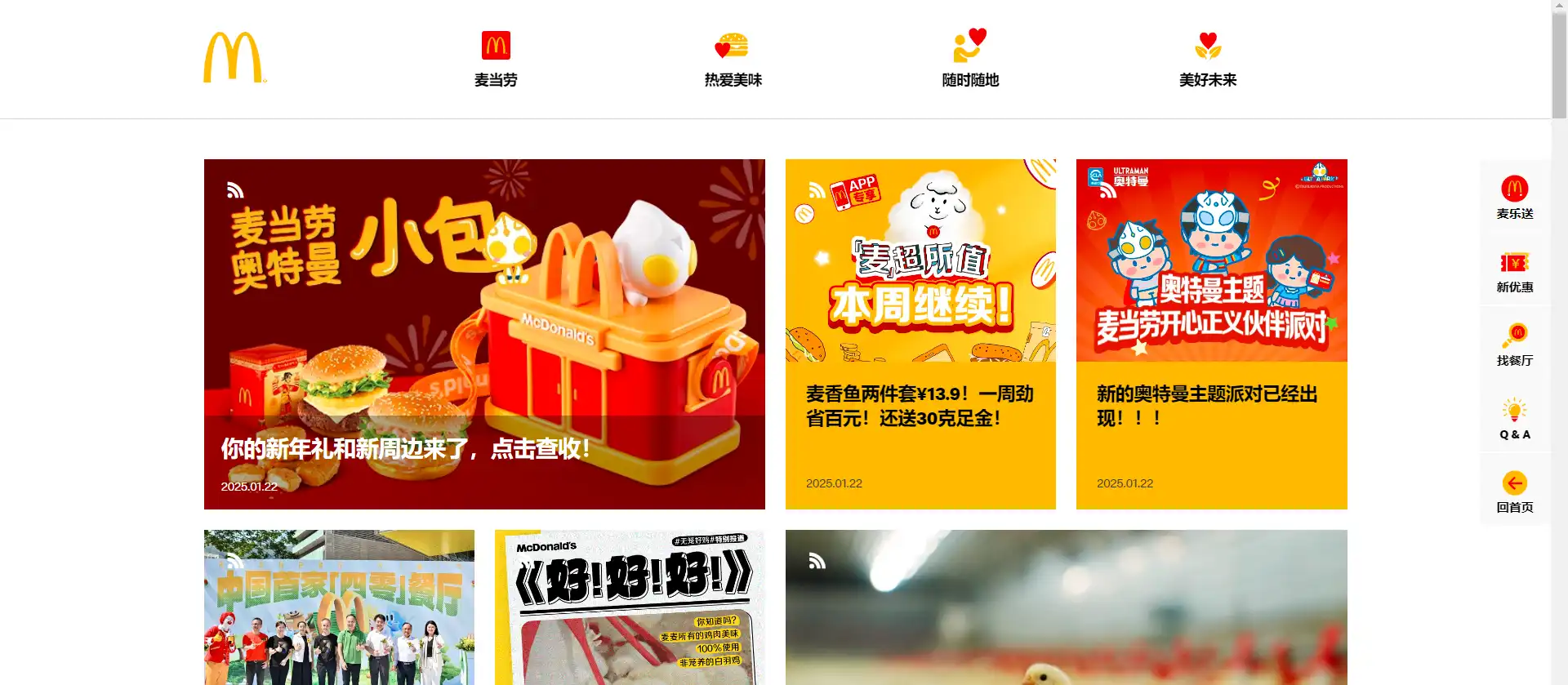How do I make my website accessible to everyone?
There are several factors involved in website optimization.
What makes a website great is not just the looks and fancy banners, but also the overall content and backend structure.
A well-optimized Chinese website, aside from the translation and localization of content, also includes SEO best practices such as site submission and correct integration of social media APIs.
READ MORE >>> When Should You Translate Your Website Into Chinese?
According to Common Sense Advisory via Harvard Business Review, they found out “72.1% of consumers spend most or all of their time on websites in their own language,” while “2.4% of consumers said they would be more likely to buy a product with information in their own language.”Below are the best practices for web optimization, especially if you recently launched a Chinese website.

Chinese website optimization McDonald sample
McDonald’s China has tailored its website and digital strategy to fit local user behaviors and expectations. Here’s how it optimizes its website for the Chinese market:
1️⃣ Information-Dense Pages 📄
- Unlike Western websites, McDonald’s China features rich content on every page, including promotions, delivery options, and membership benefits.
2️⃣ Longer Pages & Multiple Categories 🔍
1 Baidu Webmaster Tools for Chinese SEO
Similar to how Google Webmaster Tools are commonly used for English websites, integrating Baidu Webmaster Tools is essential for optimizing a Chinese website. These tools provide valuable insights and features to enhance your website’s performance in the Chinese market.
Setting up a Baidu Webmaster account is a straightforward process, though it’s worth noting that the platform is entirely in Chinese. For businesses unfamiliar with the language, partnering with SEO specialists can help ensure the data is properly interpreted and utilized effectively.
Keep in mind that creating a Baidu Webmaster account requires verification with a Chinese mobile number. If you encounter any challenges during the setup process, our team is here to provide assistance and guide you through every step.
2 Submitting Your Website to Baidu: First Impressions Matter
Getting your website indexed by Baidu is crucial, but making a strong first impression is even more important. According to Hermes Ma, a contributor to Search Engine Journal and a digital marketer based in China, starting with a few pages of robust, high-quality content is key. This strategy signals to Baidu that your site is well-organized and reliable.
On the other hand, launching a site with numerous pages that are empty, duplicated, or low in quality can harm your credibility and make it difficult to earn Baidu’s trust.
As Ma explains, “If you fail to make a good first impression, Baidu then allocates fewer resources crawling your site in the future.”
To avoid this issue, SEO specialists or webmasters often disallow Baidu from crawling the website during the User Acceptance Testing (UAT) phase, ensuring only polished and optimized pages go live.
3 Localizing Content to Connect with Your Audience
Localization goes beyond simple translation—it’s about adapting your website to resonate with your target audience. This includes not only translating text professionally but also tailoring the layout, colors, and even small details like time and date formats to suit local preferences.
Effective localization extends to keywords, meta descriptions, tags, and other SEO elements. For a truly impactful approach, many companies also translate their taglines into Chinese and adjust brand colors and ad copies to align with local tastes. In the Chinese market, banners and pop-ups are often bright and flashy, creating a visual appeal that resonates with local users, even if it means deviating from standard brand guidelines.
4 Integrating Social Media APIs and Local Payment Gateways
An essential aspect of optimizing your website for the Chinese market is integrating local social media APIs, making it easier for visitors to follow, opt-in, and engage with your brand through popular channels. Unlike Western platforms such as Facebook, YouTube, Instagram, and Twitter, China’s social media landscape is dominated by WeChat and Weibo. These platforms offer direct ways for users to connect with your business.
For e-commerce websites, integrating APIs goes beyond social media—it’s crucial for seamless user experiences. From opt-ins and account logins to smooth payment transactions, these integrations ensure your website is convenient and user-friendly for Chinese consumers.
5 Faster Loading and Mobile-Friendly Design
Polished Content:
Mobile responsiveness is a key factor in content localization. The mobile layout often differs significantly from the desktop version, and adjustments may be needed to align with your website’s goals.
Equally important is page speed. Baidu’s Mobile Instant Pages (MIP) can help optimize loading times by caching pages on MIP servers. This reduces page weight and enhances the mobile browsing experience. For more insights, refer to our previous post, 5 Things You Should Know About Baidu.
If you need assistance with optimizing your website for the Chinese market, feel free to contact us. Our team is here to help!
